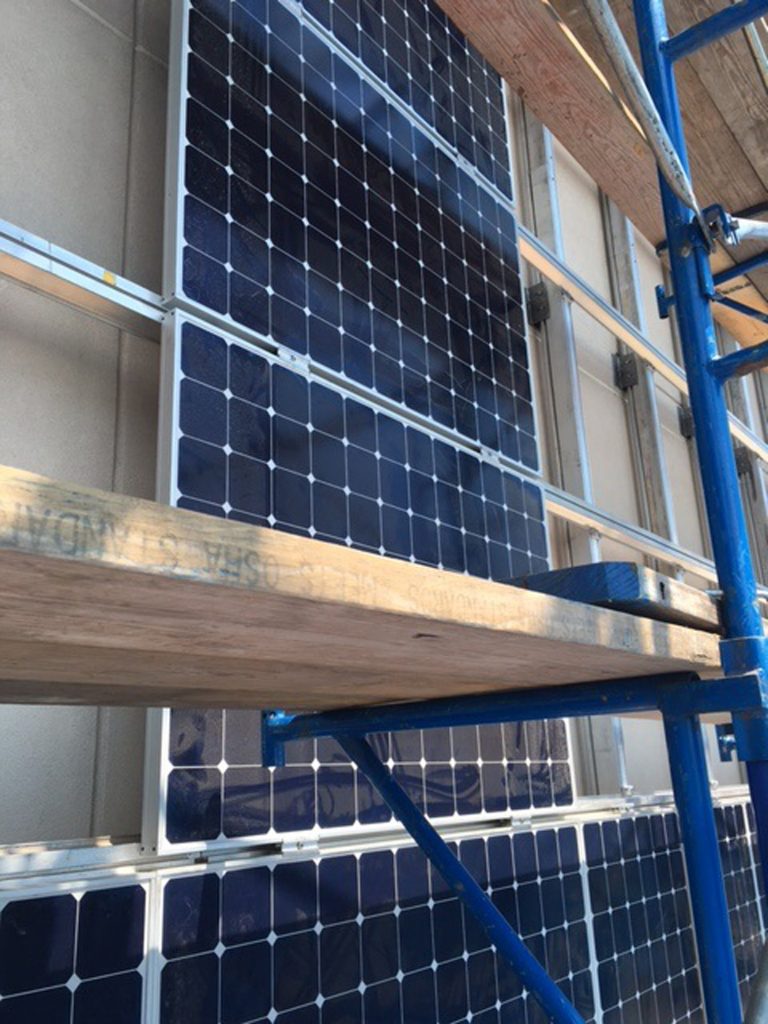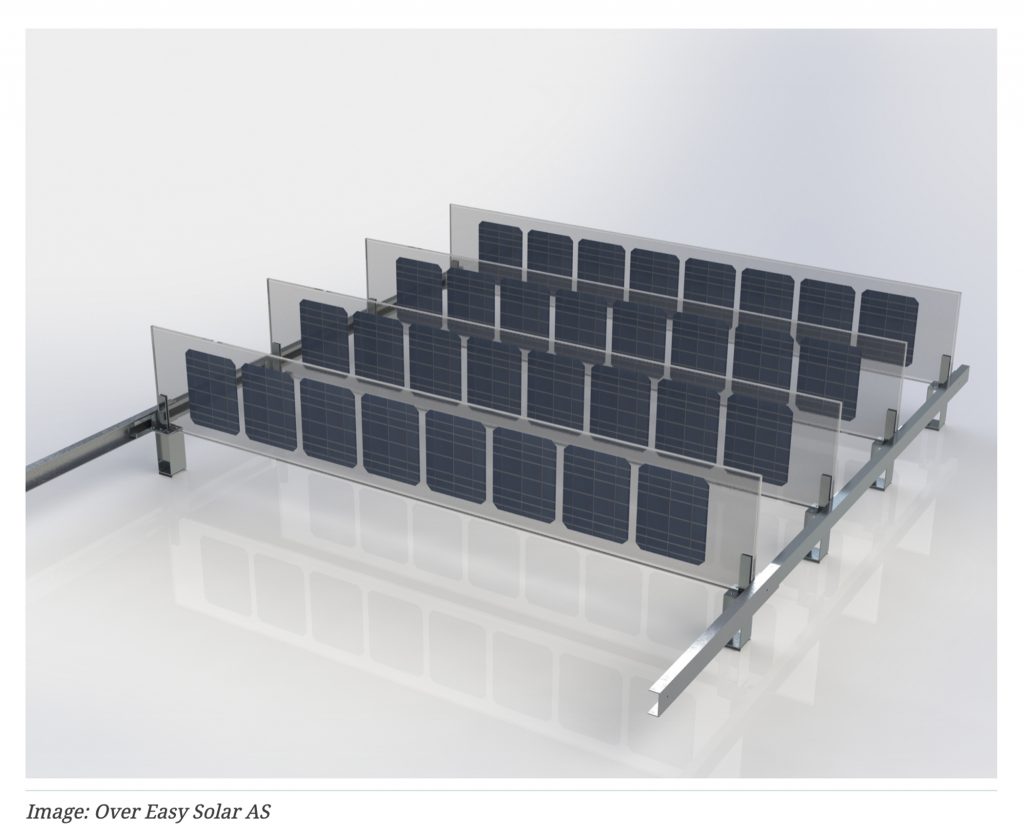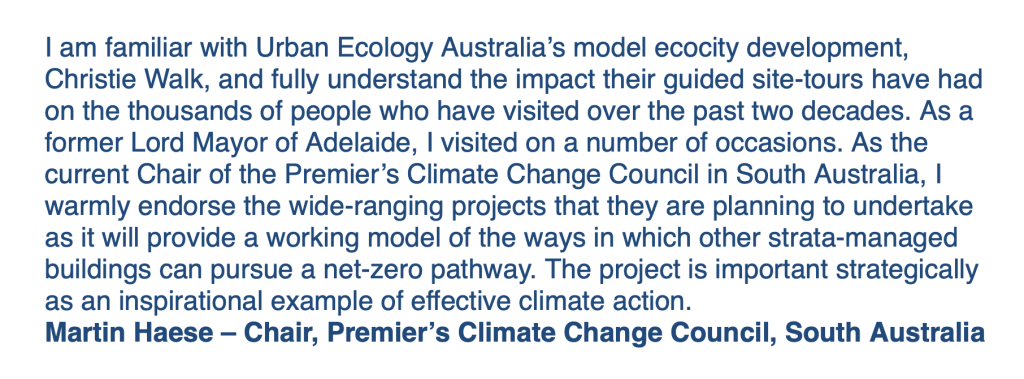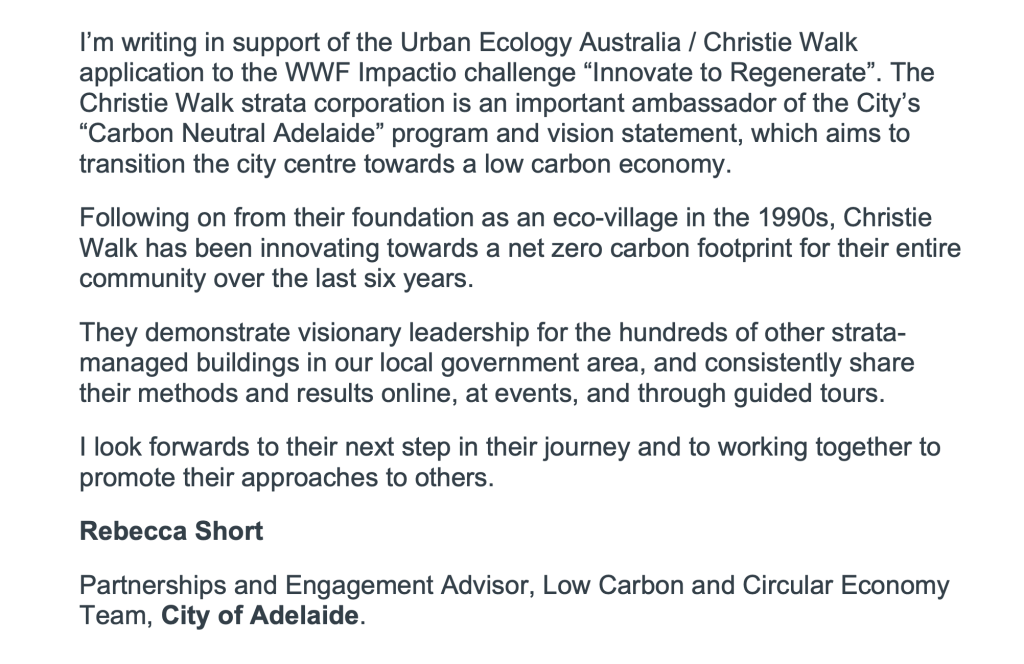Solutions for apartments
There’s a problem for people living in medium and high density apartments as they lift ambition for climate action: Apartment blocks have limited roof space per apartment for solar PV and limited options for sharing stored energy for self-consumption and charging EVs.
To address this problem, our team will continue to research and demonstrate innovative solutions including:
- vertically-mounted PVs on an eastern wall
- vertically mounted bi-facial PVs facing east-west
- PV trees
- behind-the-meter solar and storage sharing
- a comparison of innovative battery storage options
- shared electric vehicle charging technology, powered by the strata landlord
We’ll keep you informed of progress
Urban Ecology Australia Inc has been recognised with many awards for its 30 year history of research and implementation of best practice regenerative urban development. Lessons learned are shared through in-person site tours and on-line virtual tours of its multi-award-winning model ecocity development Christie Walk.
Vertically-mounted PVs on an eastern wall
What do you do when the available roof space is already crowded with solar PV and solar thermal collectors? One option might be to mount PVs on vertical walls. We have a significant area of eastern boundary wall on one of our apartment blocks, Sturt Apartments. Fortunately the neighbouring low-rise apartments were built recently, so overshadowing won’t be a problem for the foreseeable future.
So what options might we look at?
- Standard rack-mounted vertical PVs such as those installed at Urban Health Plan in New York.

- Printed thin film flexible PVs, such as the technology developed at the University of Newcastle.
- Frameless PVs bonded directly to the wall, such as Sunman eArc SMF430F frameless PVs.
Innovative PV options where roof area is limited
- Vertically-mounted Bi-Facial PVs facing east-west.

- PV Trees:
- Umbrella style
- Fixed PostMount PV trees
- Motor-less passive solar tracker trees
- Multiple battery storage options will be considered so we can demonstrate and compare performance:
- Existing Tesla PowerWall installation
- Zinc-bromine flow battery – Redflow – Note that round-trip efficiency is only 80% compared with 90% for Tesla PowerWall, making them less attractive for use in time-shifting usage of energy that was bought and stored at cheap off-peak rates.
- Iron Flow battery – ESIAP
- Non-flow zinc-bromide gel battery – Gelion
- Lithium Iron Phosphate (LFP) battery – sonnenBatterie Evo
- Modular storage LFP battery – BYD Battery-Box
- We’ll scour the Neighbourhood Battery Knowledge Hub for ideas and implementations that others have found useful.
- We’ll also check the ARENA Community Batteries for Household Solar site to check out funding opportunities.
Converting dwellings with individual NMIs to shared solar
Convert NMI meters of some individual households to smart meters, and move them behind a single retailer meter, so that those with private PVs can share their excess generation with non-PV households, and be credited for it. Find software and hardware to manage sharing, credits, debits and billing. Options:
- Powerledger blockchain Peer-to-Peer energy trading solution. Options include coverage for either:
- Just 6 apartments
- Whole of Christie Walk site
- Neighbourhood solution, allowing solar and storage sharing for all consumers connected to our nearest electricity sub-station or smart transformer.
- Powertracer from Enosi Energy. No blockchain involved!
- SolShare hardware-based solution from Allume Energy.
- Virtual microgrid solution from Evergen combining Intelligent Control with a Virtual Power Plant.
- Community solar options that enable apartments to share renewable energy generated off-site:
- The People’s Grid by Oxamii.
- Off-site solar investment via Haystacks Solar Gardens.
Shared EV Charging Infrastructure
EV charging infrastructure with solar power supplied by the strata Primary Corporation, billed to individual users. We will consider various options:
- JetCharge / Chargefox
- Schneider EVLink RFID Smart Wallbox – appears to be solid option for automatic charging to individual users who simply swipe the Wallbox with their RFID card.
- V2G Bi-directional Charger – Wallbox Quasar
- Enphase Bi-directional Charger – expect the approvals process for use in Australia will take some time.
- Plan for the possibility of a future fleet of robo-taxis to replace individually operated vehicles.
What people say about our innovations
We’re delighted with the support we’ve received as we lift our ambition on climate action to reduce emissions, and the recognition of its importance to the wider community. Here are examples:


Project summary and overall plan
All of the elements of our solution are either:
1) Mature technologies, but deployed in an innovative fashion.
2) New products just coming onto the market.
3) Mature technologies, deployed in a hybrid manner, as often has to happen in retrofitting in existing multi-residential buildings.
4) Contribute towards building a micro-grid.
Examples:
1) Researching and deploying best alternative options for PVs on vertical walls: Conventional framed-PVs? Frameless adhesive PVs? Thin-film printed PVs?
2) Hardware vs software solutions for moving multiple multi-residential NMIs behind the meter, to allow optimum self-consumption on site. Should block-chain technology for this purpose be rejected because it is just too energy-hungry? Or is it the only realistic option for fully-integrating a smart micro-grid?
3) Bifacial transparent PVs mounted vertically instead of as pergola roofs. What is the actual vs theoretical performance?
4) Building a micro-grid. Almost comically, for our 27 dwellings, we have 17 NMI connections to the grid. That’s inefficient and costly. Even worse, some of our prosumers are exporting to the grid, whilst at exactly the same time, others are importing from the grid, causing quite unnecessary grid congestion, which in turn limits the penetration of renewables into the grid.
So our project is a micro version of Rewiring The Nation, and is important as a model of what needs to happen in multi-residential developments around the country, for both retrofitting and for new construction.
The plan is to reduce NMI grid connections from 17 to 4, either physically or via a virtual microgrid. Each component of the project – whilst can be viewed as an individual item – is a step towards that overall vision.
Our progress over the past 6 years is documented in our 11-part blog series, starting here:
A video of our tech sustainability upgrades is here:
A complete playlist of videos here:
Read more of our adventure in low-carbon living
You can continue reading of our adventure with Episode 12 – Multi-vehicle EV charging in strata groups and office carparks.
It’s part of our special series:
Aiming beyond NetZero at Christie Walk – Adventures with an environmentally conscious inner-urban community.


Leave a Reply